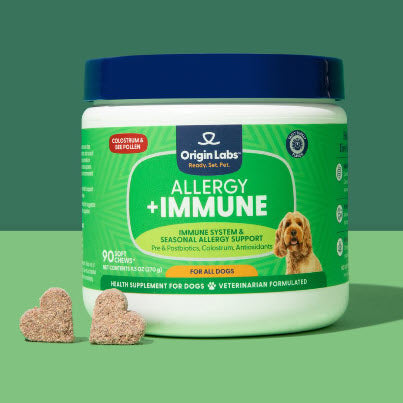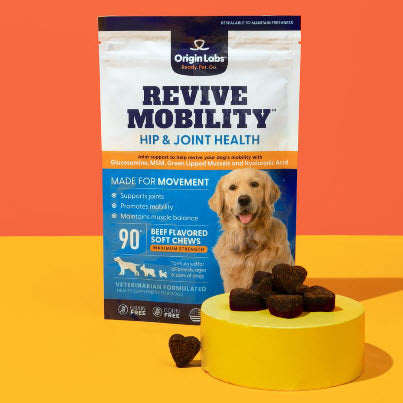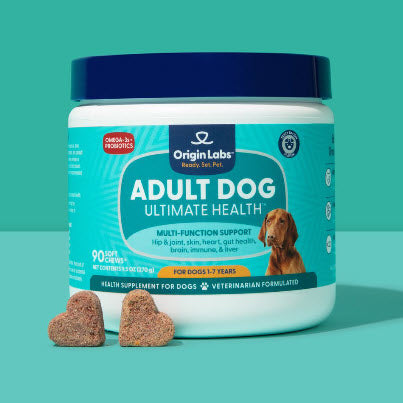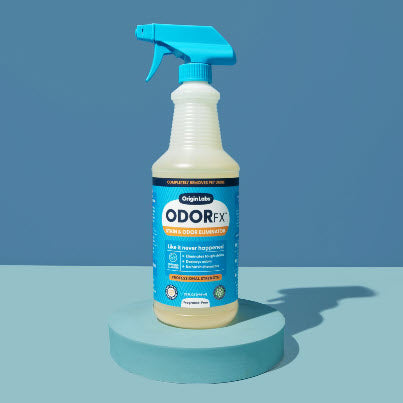Introduction
Fleas are small, flightless insects that survive by consuming the blood of their hosts. In many cases, these hosts are our beloved dogs. A flea infestation is not only uncomfortable for dogs but can also lead to health problems such as skin irritation, allergic reactions, and even anemia if left unchecked.
Traditional methods of flea control usually involve the use of topical treatments, collars, or pills. While these solutions can be effective, they often contain harsh chemicals that may cause unwanted side effects. As pet owners increasingly seek to minimize their pets' exposure to such substances, the quest for natural and effective home remedies for fleas on dogs has become more popular.
This article delves into 10 surprising home remedies for fleas on dogs that are not only natural but also highly effective. These remedies range from common household items like apple cider vinegar and baking soda to specific diets and grooming routines that can help keep your dog flea-free. So sit back, read on, and prepare to be surprised by how simple it can be to manage a flea infestation naturally!
1. Apple Cider Vinegar
Apple cider vinegar for fleas on dogs is a simple yet effective home remedy. Fleas, like most insects, are not fond of acidic environments. Apple cider vinegar, with its strong acidic nature, creates an inhospitable environment for them.
Here's a step-by-step guide on how to use apple cider vinegar to repel and eliminate fleas:
- Dilute raw, organic apple cider vinegar with equal parts water.
- Fill a spray bottle with the solution.
- Lightly mist your dog's coat with the solution, being careful to avoid the eyes and ears.
- Repeat this daily until you no longer see any signs of fleas.
Remember, not all apple cider vinegars are created equal. For maximum effectiveness against fleas, use raw and organic apple cider vinegar. The unfiltered and unpasteurized variety has more potent properties compared to processed options.
This natural remedy is just one of many ways to keep your furry friend flea-free without resorting to harsh chemicals or expensive treatments.
2. Essential Oils
Essential oils are natural extracts from plants that have been used for centuries due to their therapeutic properties. They are highly concentrated and contain various compounds that can have beneficial effects on both humans and animals.
When it comes to repelling fleas on dogs, two essential oils stand out: lavender oil and cedar oil. These oils have strong scents that fleas dislike, making them an effective and natural remedy against infestations.
Why Lavender Oil Works
Lavender oil not only has a pleasant fragrance but also carries properties that repel fleas. Its scent acts as a deterrent, keeping these pesky insects away from your dog. Additionally, lavender oil has a calming effect on pets, which can help reduce anxiety and stress.
How Cedar Oil Helps
In contrast, cedar oil works in a different way. It contains certain compounds that interfere with the metabolism of fleas, ultimately leading to their demise. By using cedar oil, you not only repel fleas but also target their life cycle, preventing future infestations.
Safe Usage of Essential Oils
While essential oils can be effective against fleas, it's important to use them safely to avoid any adverse reactions in your dog. Here are some guidelines to follow:
- Dilute the oils: Essential oils are highly concentrated and can be too strong for direct use on dogs. Always dilute them with a carrier oil like coconut or olive oil before applying. The recommended ratio is one drop of essential oil per 50 drops of carrier oil.
- Choose the right oils: Not all essential oils are safe for dogs. Avoid using oils like tea tree and pennyroyal, as they can be toxic to pets. Stick to lavender oil and cedar oil, which are generally well-tolerated.
- Perform a patch test: Before using any essential oil on your dog, do a patch test to check for any allergic reactions. Apply a small amount of diluted oil on a small area of your dog's skin and observe for 24 hours. If there is no redness or irritation, it should be safe to use.
- Avoid contact with eyes and nose: When applying essential oils on your dog, be careful to avoid the eye and nose area. These areas are sensitive, and direct contact with oils may cause discomfort.
- Monitor for signs of sensitivity: After applying essential oils on your dog, keep an eye out for any signs of sensitivity such as excessive scratching, redness, or swelling. If you notice any adverse reactions, discontinue use immediately.
Homemade Remedies with Essential Oils
Here are two simple ways to use essential oils as a natural flea repellent for your dog:
- Homemade Essential Oil Flea Collar: This method involves creating a solution with essential oil and water, then applying it to your dog's collar or a bandana. Here's how to make it:
- Mix 2-3 drops of lavender or cedar oil with 1-2 tablespoons of water.
- Dip your dog's collar or a bandana in this solution.
- Let it dry completely before putting it back on your dog.
- The scent of the essential oil will help repel fleas while your dog wears the collar or bandana.
- Bedding Spray: Fleas can also hide in your dog's bedding, so it's important to treat that area as well. You can make a simple spray by combining essential oil and water in a spray bottle. Here's how:
- Combine 25 drops of lavender or cedar oil with 250ml (8 ounces) of water in a spray bottle.
- Shake well to mix the ingredients.
- Lightly spritz your dog's bedding with the spray, focusing on areas where fleas are likely to hide.
- This homemade spray can be used regularly to keep your dog's bedding flea-free.
With these homemade remedies, you can harness the power of essential oils to protect your dog from fleas naturally. Just remember to use them safely and consistently for the best results.
3. Diatomaceous Earth
Diatomaceous earth is a powerful home remedy for fleas on dogs. It works by drying out the outer shell of fleas, ultimately killing them. This natural powder is created from the remains of small water organisms known as diatoms and is safe for pets when used correctly.
Safe Application on Dogs:
When using diatomaceous earth on your dog, it's important to follow these steps:
- Make sure you have food-grade diatomaceous earth.
- Gently sprinkle the powder onto your dog's fur, avoiding their face and eyes.
- Massage the powder into their fur, making sure to reach down to the skin where fleas like to hide.
- Leave the powder on for a few days before giving your dog a bath to wash it off.
Using Diatomaceous Earth Around the Home:
To tackle fleas in your home, here's how you can use diatomaceous earth:
- Sprinkle a thin layer of diatomaceous earth on carpets, bedding, and other areas where your pet spends time.
- Let it sit for about 24 hours to allow the powder to work its magic on any fleas present.
- Vacuum thoroughly, making sure to remove all traces of the powder along with any dead fleas or eggs.
Precautions:
While diatomaceous earth is generally safe, there are a few precautions to keep in mind:
- Wear a mask when applying the powder as it can irritate your respiratory system if breathed in large amounts.
- Make sure both your pet and the environment are dry before using diatomaceous earth, as moisture can reduce its effectiveness.
4. Vacuuming and Washing
Maintaining a clean environment is crucial in the fight against flea infestations. Fleas love warm and dusty areas, and their eggs can hide in carpets and pet bedding, waiting to hatch. By establishing a thorough vacuuming and washing routine, you can interrupt their life cycle and stop them from settling in.
Vacuuming Tips:
- Focus on High-Traffic Areas: Pay extra attention to places where your dog spends a lot of time, like their bed and favorite resting spots.
- Make Use of Attachments: Use crevice tools to get into corners and baseboards where fleas might be hiding.
- Stick to a Regular Schedule: Vacuum at least once a week, or even daily if the infestation is severe, to remove fleas, larvae, and eggs.
- Properly Dispose of Vacuum Waste: After vacuuming, seal the bag tightly and throw it away outside your home.
Washing Guidelines:
- Opt for Hot Water: Wash all pet bedding, throw rugs, and washable covers in hot water to kill fleas at every stage of their life cycle.
- Stay Consistent with Laundry: Make it a habit to wash these items weekly or more frequently during flea season.
Enhance these methods by adding natural repellents such as baking soda on carpets before vacuuming or lemon juice to the wash. These additions help create an environment that is less attractive to fleas while keeping your home smelling fresh and clean.
By incorporating these practices into your regular cleaning routine, you create an environment that is unwelcoming to fleas, ensuring your dog's comfort and health.
5. Herbal Flea Collars
Herbal flea collars for dogs offer a natural, chemical-free alternative to traditional flea prevention. The use of insect-repellent herbs, such as rosemary and thyme, has been known to deter fleas effectively. These collars can be easily crafted at home, providing a home remedy solution that's gentle on your dog's skin and safe for the environment.
DIY Herbal Flea Collar:
- Choose a soft fabric that can comfortably fit around your dog's neck.
- Cut the fabric to the desired length, ensuring it's long enough to tie securely but not too tight.
- Mix a few drops of essential oils known for their flea-repelling properties—such as lavender or cedarwood oil—with a teaspoon of water or carrier oil.
- Apply the diluted essential oil mixture onto the collar, spreading it evenly.
- Allow the collar to dry before placing it around your dog’s neck; reapply the essential oil mixture weekly.
Note: Always check with a veterinarian before applying any new substances to your pet to ensure safety.
6. Flea-Repellent Diet
A robust flea-repellent diet for dogs integrates specific ingredients that naturally deter fleas, making your furry friend less appealing to these pesky parasites. Garlic, in small amounts, and brewer's yeast are known for their repellent properties when ingested by dogs. Here's how they work:
Garlic
- When dogs consume garlic in safe, small doses, it produces an odor through their skin that fleas find unattractive.
- Caution: Garlic can be toxic to dogs in large quantities. Consult with your veterinarian on the appropriate amount.
Brewer's Yeast
- Rich in B-vitamins and antioxidants, brewer’s yeast enhances your dog’s overall health and can make their skin less tasty to fleas.
- It can be sprinkled over your dog’s food or incorporated into homemade treats.
Creating a Flea-Repellent Meal:
- Start with a Healthy Base: Use high-quality proteins and complex carbohydrates as the meal foundation.
- Add Brewer's Yeast: Mix in the recommended dosage of brewer’s yeast with your dog’s meal.
- Garlic Infusion: Consult your vet for the right amount and infuse it into your dog’s meal.
Remember, always prioritize your pet's safety by consulting with a veterinarian before introducing new elements into their diet.
7. Regular Grooming Routine
A significant line of defense against fleas is a consistent grooming routine. Notably, regular grooming for flea control can detect and prevent flea infestations before they become severe.
Here are some effective grooming techniques:
Thoroughly Brush Your Dog's Coat
Brush your dog regularly using a fine-toothed comb, preferably daily. It helps to remove adult fleas and their eggs, reducing the likelihood of infestation.
Flea Combs
A flea comb is an excellent tool for finding and removing fleas. The fine teeth catch fleas, allowing you to dispose of them in soapy water.
Bathing
Regular bathing with mild, pet-safe soap can help kill present fleas and discourage new ones from setting up shop.
To sum it up, regular grooming is an easy and natural home remedy that plays a vital role in keeping your dog's skin healthy and flea-free. It's the first step in identifying a problem and taking immediate action before it escalates into a full-blown infestation.
8. Lemon Spray
Using lemon as a natural flea spray for dogs is an effective home remedy due to its acidic properties, which fleas find uninviting. Lemon spray not only repels fleas but also leaves your dog smelling fresh.
To make a lemon-infused spray:
- Slice a whole lemon into thin pieces, including the rind and pulp.
- Place the slices in a pot of water and bring it to a boil.
- Let it steep overnight.
- In the morning, strain the solution and transfer it to a spray bottle.
This homemade lemon spray can safely be used on your dog's coat, paying attention to heavily infested areas. You can also spritz it on your dog's bedding or any areas around the house where fleas might be hiding.
Remember, always test a small area first to ensure your dog doesn't have an adverse reaction to the lemon spray.
9. Baking Soda: An Unexpected Ally Against Fleas
An ordinary kitchen staple, baking soda, often surprises pet owners with its effectiveness as a home remedy for fleas on dogs. Unassuming yet potent, it acts as a dehydrating agent that efficiently eliminates fleas. How does it work? Simply put, the tiny crystals of baking soda can penetrate the hard-shelled bodies of fleas, causing them to dehydrate and eventually die.
Despite its potency against fleas, baking soda is gentle on your dog's skin. In fact, it can even double up as a dry shampoo for dogs. Here's an easy-to-follow method to use baking soda:
- Sprinkle a generous amount of baking soda onto your dog's coat.
- Massage it into the fur, ensuring it reaches the skin.
- Leave it on for about 15-20 minutes.
- Brush out the baking soda thoroughly using a flea comb to remove dead fleas.
Remember to focus not only on the coat but also around the neck, tail, and underbelly - these are favorite hiding spots for fleas. This simple yet effective method paves the way to a flea-free life for your furry friend!
10. Final Thoughts
The home remedies for fleas on dogs explored in this article are not only effective, but also natural. They provide a safe alternative to chemical-based products, ensuring your furry friends stay healthy while getting rid of pesky fleas. Yet, it's important to remember that these remedies complement regular veterinary care and flea prevention measures, not replace them.
When it comes to maintaining your pet's overall health, consider incorporating Ultimate Health supplements from Origin Labs into their routine. These supplements are specifically designed to cater to the unique needs of dogs at different stages of life:
- Puppy Ultimate Health Chews: crafted with the health requirements of growing puppies in mind.
- Adult Ultimate Health Chews: formulated to support the well-being of adult dogs.
- Senior Ultimate Health Chews: specially developed to address the specific health concerns of senior dogs.
By combining these all-natural remedies with Origin Labs' Ultimate Health supplements, you can enhance your pet's health regime and ensure that they lead a happy and healthy life. Remember, a happy pet is a healthy pet!.
FAQs (Frequently Asked Questions)
What are fleas and how do they infest dogs?
Fleas are small, wingless insects that feed on the blood of mammals, including dogs. They can infest dogs through contact with other infested animals or environments, such as grassy areas or carpets.
What are the common methods of flea control mentioned in the content?
The common methods of flea control mentioned in the content include topical treatments and collars designed to repel or eliminate fleas. However, the content highlights the desire for effective home remedies instead.
How does apple cider vinegar work to repel and eliminate fleas on dogs?
Apple cider vinegar works to repel and eliminate fleas due to its acidic nature that fleas dislike. It can be used as a flea spray or diluted solution for dogs, and it is recommended to use raw, organic apple cider vinegar for maximum effectiveness.
How can essential oils like lavender oil and cedar oil be used to repel fleas from dogs?
Essential oils like lavender oil and cedar oil can be used to repel fleas from dogs by creating a homemade flea collar or bedding spray. It is important to dilute essential oils properly and avoid types that can be toxic to dogs.
How does diatomaceous earth work to kill fleas on dogs?
Diatomaceous earth works to kill fleas through dehydration, while being safe for dogs to ingest or be applied topically with precautions. It is recommended to use food-grade quality diatomaceous earth for this purpose.
Why is maintaining a clean environment important in preventing and managing flea infestations on dogs?
Maintaining a clean environment is important in preventing and managing flea infestations on dogs because it helps remove fleas and their eggs from the home. Adding natural repellents like baking soda or lemon juice can enhance the flea-fighting power of vacuuming and washing routines.








